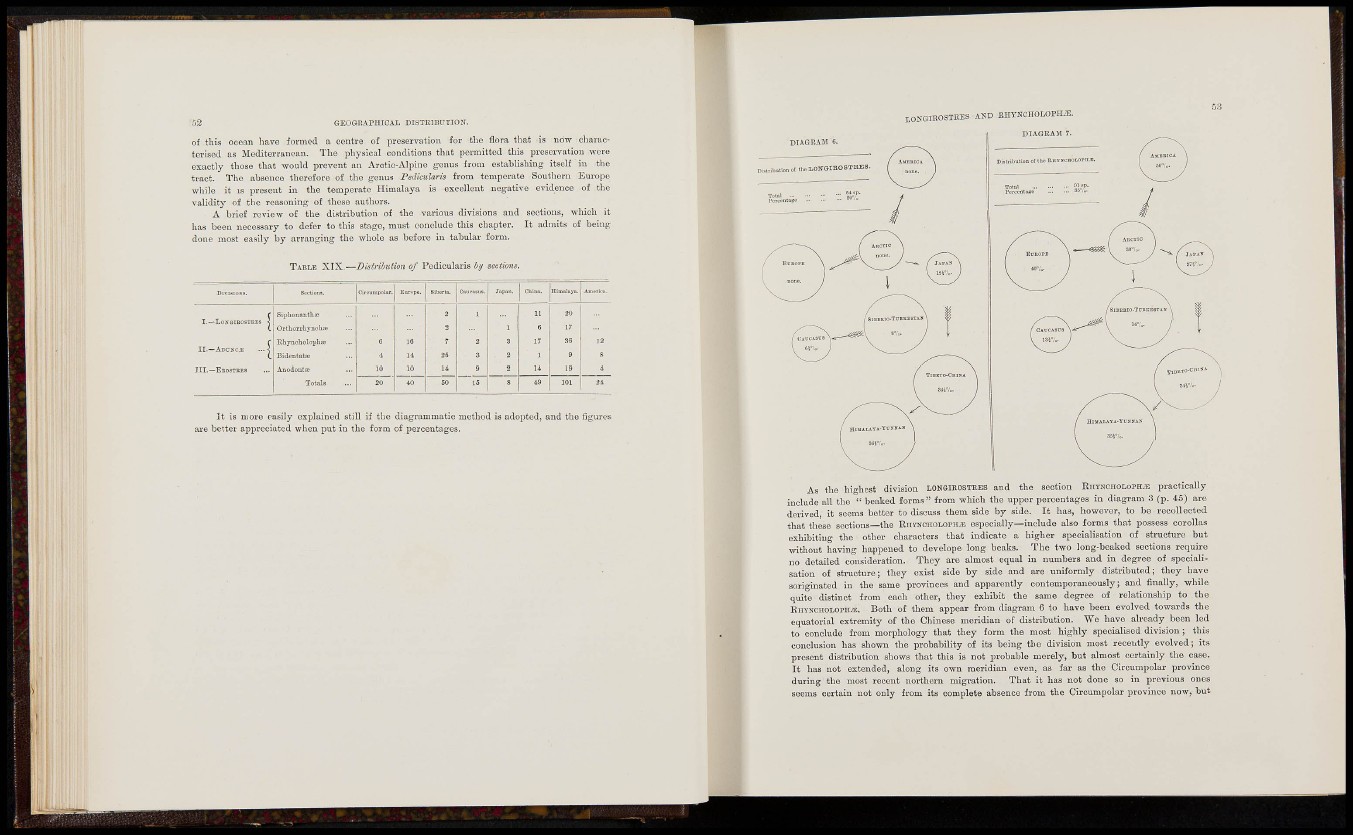
52 GEOGRAPHICAI- DISTMDÜTION.
of this ocean have formed a centre of preservation for the flora that is now characterised
as Mediterranean. The physical conditions that permitted this preservation were
exactly those that would prevent an Arctic-Alpine genus from establishing itself in the
tract. The absence therefore of the getms Pedicularis from temperate Southern Europe
while it LS present in the temperate Himalaya is excellent negative evidence of the
validity of the reasoning of these authors.
A brief review of the distribution of the various divisions and sections, which it
has been necessary to defer to this stage, must conclude this chapter. It admits of being
done most eas lily by arranging the whole as before in tabular form.
TABLE XIX.—Distribution of Pedicularis ly sections.
SectioD». Eurnpe. Sibcris. Ciiiiia. Hiomlaya.
I.—LOSGIBOSIEES I
Sipiionanthffl
Ortliorrhyiiclias
2
2
1
I
11
6 17
II.-ADCSCÍ; ...
Khyncholopba?
Bidentat»
6
•i
16
14 25
2
3
3
2
17
9
12
S
III.—EEOSTBBS Auodouta; 10 10 14 9 2 14 19 4
Totals 20 40 50 16 8 49 101 24
It is more easily explained still if the diagrammatic method is adopted, and the figm-es
ai-e better appreciated when put in the form of percentages,
LOKGIEOSTRES AND EmCHOLOPHiE.
As the highest division LONGIEOSTRES and the section RiiYNcnoLOPHJE practically
include all the " beaked forms" from which the upper percentages in diagram 3 (p. 45) are
derived it seoms better to discuss them side by side. It has, however, to be recollected
that these sections—the RnrscnoLOPnjE especially—include also forms that possess corollas
exhibiting the other characters that indicate a higher specialisation of structure but
without having happened to develops long beaks. The two long-beaked sections requii-e
no detailed consideration. They are almost equal in numbers and in degree of specialisation
of structure; they exist side by side and are uniformly disti-ibuted; they have
soriginated in the same provinces and apparently contemporaneously; and finally, while
quite distinct fi-om each other, they exhibit the same degree of relationship to the
BnYNCiiOLOPHiE. Both of them appear from diagram 6 to have been evolved towards the
equatorial extremity of the Chinese meridian of distribution. "We have already been led
to conclude from morphology that they form the most highly specialised division; this
conclusion has shown the probability of its being the division most recently evolved; its
present distribution shows that this is not probable merely, but almost ccrtainly the case.
It has not extended, along its own meridian even, as far as the Circumpolar province
during the most recent northern migration. That it has not done so in previous ones
seems certain not only from its complete absence from the Circumpolar province now, but